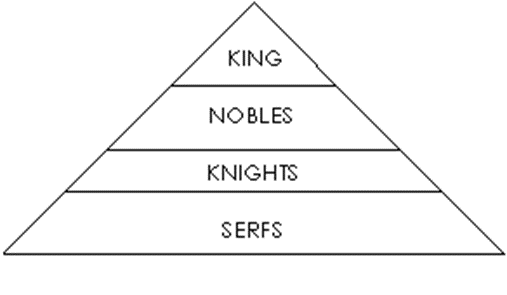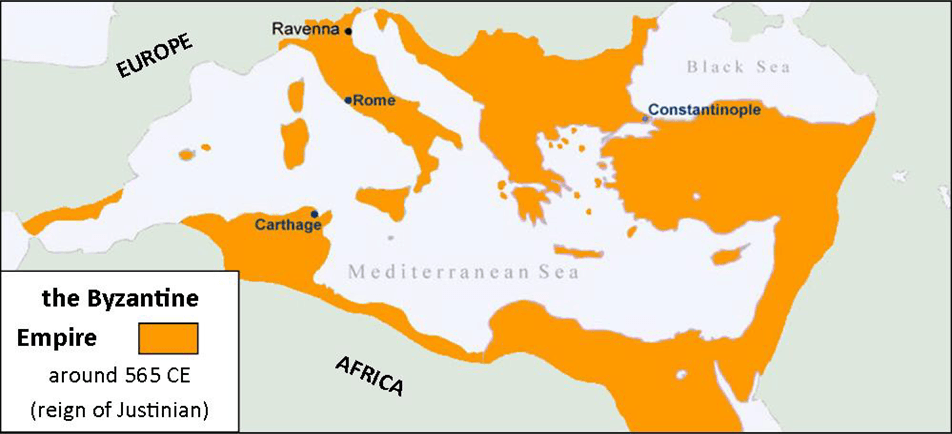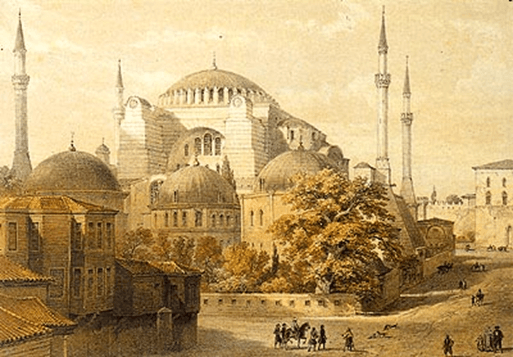Which of the following was an effect of the Crusades?
a. All Europeans converted to Islam.
b. Many former Jews converted to Buddhism.
c. European trade increased.
c. European trade increased.
Which term refers to the Medieval economic system in which there was little to no trade?
a. capitalism
b. monotheism
c. manorialism
c. manorialism
The following is a illustration of what kind of architecture?
a. Gothic
b. Romanesque

a. Gothic
Which of the following was an effect of the Hundred Years’ War?
a. English people began to speak Polish.
b. Many women began to lead armies.
c. There was a rise of nationalism in England and France.
c. There was a rise of nationalism in England and France.
Which characteristic or theme of the Middle Ages is demonstrated by this chart?

a. trade and economy
b. the power of the Church
c. feudal social structure
c. feudal social structure
What was one result of the Bubonic Plague?
a. the decline of feudalism
b. the end of Christianity
c. discovery of germs
a. the decline of feudalism

According to the map above, which of the following is the best conclusion?
a. North Africa was not part of the Byzantine Empire.
b. The Byzantine Empire surrounded the Mediterranean Sea.
c. The Byzantine Empire was located in South America.
b. The Byzantine Empire surrounded the Mediterranean Sea.
Russia’s isolation from Western ideas and culture
a. was a result of Mongol rule.
b. led to advances in learning.
c. was not influential on Russian society.
a. was a result of Mongol rule.
What was the purpose of Justinian’s Code?
a. simplify old Roman Law
b. improve Byzantine art
c. increase military efficiency
a. simplify old Roman Law
In the Early Middle Ages, which of the following were centers of learning?
a. monasteries
b. gas stations
c. farms
a. monasteries
The Crusades
a. were fought between England and France over territory.
b. put an end to the Muslim religion forever.
c. led to an increase in trade for Western Europe.
c. led to an increase in trade for Western Europe.
Thomas Aquinas was a philosopher who tried to combine studying with religion. This philosophy is referred to as
a. Scholasticism.
b. feudalism.
c. polytheism.
a. Scholasticism.
The Byzantine empire helped to preserve the traditions of
a. the Roman Empire.
b. American Indians.
c. the Ancient Egyptians.
a. the Roman Empire.
Using your social studies knowledge and the chart above, what could you infer was the cause for the decrease in population between 1340 and 1450?
a. more food
b. disease
c. moving away
b. disease
Which of the following causes of decline was common to both the Roman and Byzantine Empires?
a. persecution of Christians
b. feudalism
c. problems with invaders
c. problems with invaders
*Daily Double*
What is the name of this church, built by Justinian in 537 to glorify God?
a. First Byzantine Church
b. Hagia Sophia
c. St. Peter’s Basilica

b. Hagia Sophia
"No free man should be put in prison unless he has legally committed a crime."
From which document was the excerpt above most likely taken?
a. the Magna Carta
b. the Laws of the Twelve Tables
c. the Ten Commandments
a. the Magna Carta
Which of the following was the political system used during the early Middle Ages, in which there was no centralized government?
a. feudalism
b. republic
c. democracy
a. feudalism
"A deadly disease came into the city of Florence.
Because God was angry and wanted to punish us for being bad, the disease killed many people."
--the Decameron
To which event does this passage refer?
a. Black Death
b. Hundred Years’ War
c. fall of Rome
____________________________________________________
a. Black Death
On Children When a man is married and has children, he has control over the children. He also has control over all of his grandchildren.
On Crime If someone kills someone else by accident, the killer will not be punished. The law only punishes people who mean to do wrong, not people who accidentally do wrong.
--Justinian’s Code, Byzantine Empire
According to the the excerpt above,
a. Byzantines saw accidental and purposeful killings as the same.
b. in Byzantine society, fathers had great power over their families.
c. in Mongol Russia, theft was not considered a crime.
b. in Byzantine society, fathers had great power over their families.